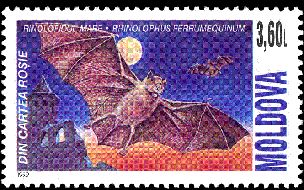A disease spreading rapidly through the state’s bat population has led to a 70 percent decline in the number of bats hibernating in mines and other sites surveyed by state researchers over the past two years, wildlife officials said.
A fungus known as White Nose Syndrome is killing off many species of bats in New Hampshire and across the Northeast after it first appeared in the state a few years ago. “A 70 percent decline in our small sample of hibernation sites is dramatic,” said John Kanter, a wildlife biologist with state Fish and Game who runs the state’s non-game and endangered species wildlife program. The state monitors the bat population by regularly surveying eight mine sites around the state where bats are known to hibernate.
Kanter said the sites are just a fraction of the total bat population, but are a good indicator of what’s happening statewide.
Researchers found more than 3,000 bats in four of the larger sites in 2009, but that number plunged to just 16 this year, Kanter said.
The sudden drop has been attributed to the spread of the White Nose Syndrome, a disease that is usually fatal and has been found in several of the hibernating sites in New Hampshire.
Wildlife officials said the signs of the disease are a white fungus that appears on bats’ faces and wings. The disease was first discovered in the winter of 2006-2007 in caves in New York. The disease, which arrived in New Hampshire in 2007, is spread from one bat to another, making it difficult to control, officials said.
Source: New Hampshire News, August 17, 2011
http://www.newhampshire.com/article/20110817/NEWS01/708179969

- Log in to post comments
